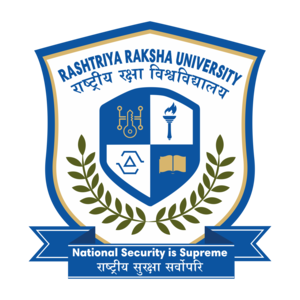
Legislative and Policy Measures for Child Protection
LEGISLATIVE AND POLICY MEASURES FOR CHILD PROTECTION
- Muskan Malviya, National Law University, Odisha
There are a plethora of legislation, regulations and judicial pronouncements on the defense of children\'s interests at national and foreign level. Both of these have provisions to discuss the recovery and protection of children who have been emotionally and physically exploited and ignored.
While the term child was not specified under the Indian Constitution, the makers of the constitution became conscious that the children needed extra care because of their physical and emotional immaturity.
“Article 15(3) of the Constitution requiring the State to make special provisions for children and Article 24 of the Constitution bans the hiring of children under the age of 14 in factories and in risky occupations”. This is definitely representative of the importance for children\'s health and welfare. Children are the property of the country, and hence “Article 39(f) states that children shall have opportunities and facilities to grow in a safe manner and in conditions of equality and dignity, and that childhood and youth shall be protected from abuse and spiritual and material abandonment”.
“Section 45 of the Constitution makes provision for by the State shall strive to provide free and compulsory schooling for all children within a span of ten years from the beginning of the Constitution before they reach the age of fourteen. Within ten years after the constitution\'s implementation this legislation had to be followed. But it was only fifty years since the Constitution was adopted in 2002 that Article 21A was added to the constitution in order to meet this clauseto have free and compulsory education for all children aged six to fourteen”.
The Government has taken a variety of regulatory and administrative steps to protect the country\'s child rights. Government is now introducing numerous regulations, policies, and services throughout the country to protect children\'s interests. The main regulatory and administrative acts are:-
The Factories Act, 1948 :-
The First Health Legislation of the UK was the Factories Act,1881. Implementation of the Act was restricted: the Act was again revised in 1948 and the major provisions are as follows: “Forbid work in children under the age of 14 in the factory”. Factory requires the organization that employs 10 or more staff, or 20 or more, without the assistance of the military. Persons between the ages of 14 and 15 can be employed in compliance with the following conditions set out in Sections 68, 69 and 71 of the Act: such persons should have a medical credential issued by a physician and should present a token relating to that qualification.
The Free and Compulsory Education Act, 2009: The Rights of Children
“The Children\'s Right to Free and Compulsory Education Act, 2009 describes ‘child of the age of six to fourteen years’. The term compulsory education under the Act means obligation of the government to, i) Provide free elementary education to every child of the age of six to fourteen years; and ii) Ensure compulsory admission, attendance and completion of elementary education by every child of the age six to fourteen years. It shall be the duty of the appropriate Government. To ensure availability of a neighbourhood school as specified in section 6; iii) Ensure good quality elementary education conforming to the standards and norms specified in the schedule; iv) Provide infrastructure including school building, teaching staff and learning equipment; v) Provide special training facility specified in section 4”;
“The Right to Free and Compulsory Education Act forbids a teacher from holding a pupil in any class or from expelling a pupil from kindergarten before primary education is finished”. The Legislation even forbids every school from administering some form of physical or mental abuse, and anyone who violates this clause is liable for disciplinary action in keeping with the rules of service applied to that adult.
Prevention of Children from Sexual Offences Act (POSCO ACT, 2012)
The 2012 legislation on the protection of minors from sexual offences specifically addresses the issue of child sexual abuse previously charged under laws that does not differentiate between adult and child offenders. Within this act, at all levels of the legal process, various child protective programs are applied. “The Special Court is required to complete the trial, as far as possible, within a span of one year. Press publication of the child\'s name in the newspaper is a criminal offence, criminal for up to one year. The statute calls for the child\'s treatment and recovery as long as the case is lodged with either the Special Juvenile Police Bureau (SJPU) or the municipal police. Immediate and appropriate treatment and security are given (such as admitting the child to a foster home or to the closest hospital within 24 hours of the report). The Child Welfare Committee (CWC) is therefore obligated to be informed within 24 hours of the complaint being registered. Often required to track implementation of the Act are the National Commission for the Protection of Child Rights (NCPCR) and State Commissions for the Protection of Child Rights (SCPCR)”.
The Juvenile Justice ( Care and Protection of Children) Act, 2015:
Specific rules for heinous offenses perpetrated by children over the age of seventeen were made pursuant to section 15 to combat juvenile criminals who conduct heinous offenses in the 16-18 age range.Upon carrying out preliminary review, “the Juvenile Justice Board is given the option to transfer cases of heinous offences by such children to a Children\'s Court (Court of Session)”. The regulations allow for children to be held in a \'secure position\' before and during the trial until reaching the age of 21, after which the child\'s examination is carried out by the Trial of Children. After the assessment, the kid is placed on probation and, if the perpetrator is not healed, the rest of the sentence is transferred to the jail. The bill will act as a dissuasive of juvenile criminals committing criminal crimes like abduction and homicide defending the rights of the victims.
Child’s Labour (Prohibition & Regulation) Act, 2016
“The Child Labor (Prohibition & Regulation) Amendment Act, 2016” This Parliament passed which came into effect w.e.f. 1.9.2016.The amending act bars minors under the age of 14 from work. The amendment also bans the recruitment of unsafe workplaces and juvenile activities between the ages of 14 and 18, and reviews their working habits where they are not forbidden. The amendment also provides for more stringent punishment for employers for breach of the Act and makes the offense of employing any child or adolescent as recognizable by an employer in contravention of the Act.
The following policy measures Schemes are being implemented :
The National Child Program 1974:
This law ensures that children are the \'supreme asset\' of the government.Some of the legislation provisions are as follows: All children need to be protected by a robust insurance system.
Programs to be introduced to provide children with nutrients & remove deficits from the children\'s diets, To offer non-formal instruction, Particular attention to be paid to physically disabled, mentally impaired children. Equality of opportunities shall be assured for all children.
Education National Regulation 1986:
It was a revision of secondary education; it revised the first regulation in 1968. The strategy has been considered a milestone. This policy gave the Compulsory Primary Education utmost priority. Early childhood care & education was also given precedence. It stressed the need for large-scale commitment to grow children in India\'s Rights To Children through both government and voluntary organizations. A number of later ventures around the world, such as the Black Board Programme, Sarva Siksha Abhiyan, etc. Project Black Board &Sarva Siksha Abhiyan has been immensely popular worldwide.
National Child Labor Policy, 1987:
The New Child Labor Policy is a landmark in India\'s radical phasing- child labour. The system incorporates programs in education, healthcare, nutrition, coordinated child development, and employment.
National Health Policy 2002:
The first government reform, 1983, aimed at achieving by the year 2000 \'government for everyone.\' The second health program, 2002, aims to emphasize student safety challenges targeted at physical care and routine school health check-ups. This program\'s main goal was to eliminate communicable diseases such as HIV / AIDS & to ensure children are properly immunized against all identified preventable diseases.
There are other schemes also like Integrated Child Protection Scheme (ICPS) in 2009, Rajiv Gandhi Teenage Girls Empowerment Scheme, 2010, Reform of the Integrated Child Development Scheme (ICDS), 2012; Childline and Track Child, Beti Bachao, Beti Padhao. The Government is committed to continually review programs in their formulation and execution with a view to make them more impactful and effective.
REFERENCES :-
[1]‘The legislative measures for the child rights protection’
<https://shodhganga.inflibnet.ac.in/bitstream/10603/192456/12/12>accessed on 5 April 2020.
[2] ‘Press Information Bureau Government of India, ‘Measures by Government to protect Child Rights’
<https://pib.gov.in/newsite/mbErel.aspx?relid=113664>accessed on 5 April 2020.
[3] ‘Protection of Children from Abuse and Neglect in India’
<https://www.med.or.jp/english/journal/pdf/2013_05/292_297>accessed on 6 April 2020.












